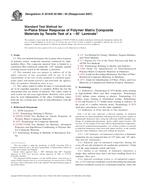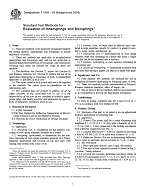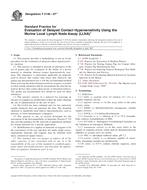1.1 These test methods cover the quantitative determination of dissolved or occluded water present in any proportion in liquid naval stores, such as turpentine, pinene, dipentene, pine oil, tall oil, and tall oil fatty acids. Three methods of moisture testing are included. The Karl Fisher titration method is the preferred method for testing tall oil, Test Methods D 803.
1.1.1 The Karl Fischer Titration method is based on the reaction between water and a complex reagent consisting of iodine, sulfur dioxide, pyridine, and methanol, whereby the iodine is converted to a colorless compound. The appearance of a persistent iodine color in the reaction mixture indicates the complete removal of free water by reaction with the reagent, and the endpoint may be measured colorimetrically. Automatic titrators find this endpoint by the restoration of a current strength when the resistance provided by the presence of water is eliminated. Amperometric automatic titrators find this endpoint by detecting the current flow that occurs once water is eliminated.
1.1.2 The coulometric titration method determines water content by electronic integration of a current sufficient to generate the precise amount of iodine from the required reagent to react with the water in the sample.
1.1.3 The azeotropic method utilizes the relatively low boiling point of water, as compared with other sample constituents, in a toluene or xylene matrix so that water is collected in a trap and measured.
1.2 The values stated in SI units are to be regarded as standard. No other units of measurement are included in this standard.
1.3 This standard does not purport to address all of the safety concerns, if any, associated with its use. It is the responsibility of the user of this standard to establish appropriate safety and health practices and determine the applicability of regulatory limitations prior to use.
Product Details
- Published:
- 06/01/2008
- Number of Pages:
- 3
- File Size:
- 1 file , 64 KB


